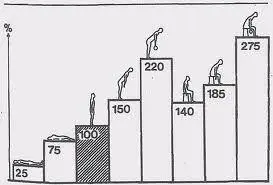Back Pain Specialists in San Francisco
What Sets Us Apart
 For over 30 years, Drs Irène and Robert Minkowsky have been successfully treating spinal back and neck pain as well as complex musculoskeletal problems on patients in San Francisco.
For over 30 years, Drs Irène and Robert Minkowsky have been successfully treating spinal back and neck pain as well as complex musculoskeletal problems on patients in San Francisco.
As back doctors, their traditional medical backgrounds in Physical Medicine and Rehabilitation (Physiatry) and Internal Medicine coupled with their knowledge and experience in Osteopathic Medicine – including craniosacral and visceral manipulation – help them provide a comprehensive approach when evaluating and treating patients with spinal back and neck pain.
In addition, Dr. Irène Minkowsky was a pioneer in using proliferative injections for tendon strain and ligament laxity. They are back specialists who think globally and inclusively about the body which yields better results than focusing solely on a symptomatic region. Emphasis is placed on nical evaluation with a detailed history and physical examination. Although the information provided by MRI scans may be helpful, it is an inadequate substitute to talking to patients and examining them.
Once a diagnosis is established the emphasis in treatment is nonpharmacologic. Muscle weakness and structural imbalance is identified and corrected through osteopathic manipulation, a specific exercise program, instruction in body mechanics and improved ergonomics.
Patients are self-empowered through understanding all the elements of their problem and how to address them. The approach is very personalized with a high success rate due to the complex, multifaceted approach with attention to detail.
Lower Back Pain
Almost everyone experiences low back pain at some point in their life. Although there are many causes of back and spinal pain, in younger individuals a disc injury is frequently responsible for the symptoms. This often occurs after forward bending or lifting. Both activities increase pressure in the discs of the lumbar spine.
Usually there are a series of events leading up to a final insult. The ultimate trigger may be trivial, such as reaching for a toothbrush or tying a shoelace. Acute back pain from a disc may be disabling and is often accompanied by muscle spasm. If a nerve is irritated, severe leg pain may result – sciatica.

Inability to straighten up or being bent to the side like the Tower of Pisa all suggest pain of disc origin. Sitting is usually poorly tolerated as this position increases disc pressure in the lumbar spine. Lying down is often the best position and may alleviate symptoms.
Over time, increased pressure in the lumbar spine resulting from sitting leads to degenerative changes in the disc and facet joints and arthritis. Frequent interruption of a static sitting position mitigates this effect and using a standing desk is optimal.
In the older population, spinal stenosis – or narrowing of the space for the spinal cord or spinal nerves – becomes more predominant. Many patients assume that having low back pain is part of the human condition and a consequence of growing older. Although it is true that we all develop structural changes in the spine as we age, they do not necessarily produce spinal pain. As back pain specialists, we try to optimize the function of the spine and musculoskeletal system so that these structural changes do not create symptoms or the need for medical treatment. Just as an antique car can purr, so too can our bodies. In our technologically oriented society, emphasis is often wrongly placed on imaging, invasive procedures and surgery.
As San Francisco back specialists – with a comprehensive global approach to back pain – injections, surgery and other invasive spinal medical treatment services are rarely necessary.
Neck and Arm Pain: “Tech Neck”
In the San Francisco Bay Area, the majority work in technology and use a computer all day which contributes to both back and neck pain. Long hours in front of a screen with poor workspace ergonomics create postural stresses.
The rest of the day it’s the phone and tablet that come into play.
In the U.S. in 2019, it is estimated that every day, we spend six hours and thirty five minutes on digital media and over twelve hours on media in total (emarketer.com). The mid-back rounds and the shoulders and head are forward. Over time, this leads to deterioration of the discs as well as secondary arthritis and overuse of neck muscles.
Patients develop neck pain and, if a nerve is pinched, pain radiates down the arm with tingling and numbness in the hands and fingers. Patients often think they have repetitive strain injury, carpal tunnel or thoracic outlet syndrome.
As back doctors in the SF Bay Area, we analyze posture and body mechanics as a first step in resolving these symptoms. This, coupled with a therapeutic home exercise program and osteopathic manipulative therapy, completes the treatment program. With this approach, most issues resolve.
Seeking medical treatment services by immediately jumping to the latest injection approach or surgery often leads to poor results. Contact us for more info!
The Load on the Cervical Spine with Forward Bending

Comparison of Lumbar Disc Pressure Measurements at L3

Lumbar pressure increases 50% with forward bending and 120% with forward bending and lifting.
Lumbar pressure increases 40% with sitting and 175% with sitting, leaning forward and picking something up.
